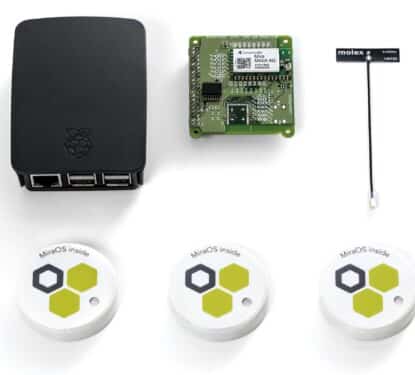Our image of large cities tends to be dominated by skyscrapers and large office complexes, but the reality is that these big buildings only make up a tiny fraction of total commercial building stock. In fact, 94% of the commercial building in the US are made up of properties with under 50,000 square feet of floor space and the situation is similar or even more pronounced in other markets around the world. While large commercial buildings with dedicated facilities managers and building management budgets have dominated smart technology adoption, the vast stock of small- and medium-sized buildings now present the real growth opportunity for smart building solution providers.
“BIoT technology penetration for small- and medium-sized commercial buildings, in particular, is well behind the curve in terms of adoption. This situation is largely a consequence of the business models and economic imperatives that have historically driven the building controls market,” our report The Internet of Things in Smart Commercial Buildings stated. “Although the cost of building controls solutions is steadily declining thanks to the proliferation and falling cost of sensor technology, deployment costs of even the most basic BAS system remain beyond the means of most smaller businesses.”
The problem is financial as there simply has not been a low-cost smart building solution that would be feasible for small- and medium-sized buildings. This is true from an installation perspective, where large capital investments cannot be justified for small buildings, and from an operational perspective, where small buildings cannot warrant hiring dedicated teams to manage the facility. The solution, however, must be a technical one that creates a lightweight and easily managed alternative to suit the scale and budget of the many smaller buildings looking for the benefits of smart technology. Big players are now finally developing such technology to seize the smart opportunity that smaller buildings present.
For instance last week, French energy management and automation solutions provider, Schneider Electric, signed a technological partnership with IT service management company, Wattsense, to introduce a simple and interoperable Light BMS solution, specially designed for energy efficiency and the sustainable development of small- to medium-sized buildings. The intention being to reduce integration costs and inconvenient interventions on busy sites.
"It is estimated that only 1% of tertiary buildings are renovated each year, but the sector is evolving and is undeniably trending towards compliance with the latest regulatory developments,” says Olivier Delepine, Vice-Président Building & Channels at Schneider Electric France. “The EU BACS decree requires to equip buildings with supervision systems to optimize energy-intensive equipment (heating, air conditioning, ventilation, lighting), reduce consumption, and considerably improve their environmental impact.”
The Schneider-Wattsense Box aims to be an affordable, cyber-secure solution with interoperable field communication protocols, where extensive IT solutions are hosted in the Cloud. It can integrate a reported 600+ connected objects, collect data from LoRa-enabled equipment to limit the intervention time and the impact on active brownfield sites.

Traditional smart-building technologies have focused on the needs of large skyscrapers or sprawling corporate campuses, not the small- to medium-sized buildings that consumers use daily, such as banks, grocery stores, restaurants or medical clinics,” says Peter Fehl, president of Building Technologies at Honeywell. “A small building footprint doesn’t mean a small business is using the site. Many large, regional, or national brands have scores of sites that occupy less than 50,000 square feet of space; not only can they not properly manage energy consumption at a specific site, but it’s nearly impossible to understand operational performance across a portfolio of buildings.
Back in December 2020, Honeywell launched its Small and Medium Building Administrator, a scalable building portfolio management system powered by Honeywell Forge. Designed specifically for small- and medium-sized buildings, the system promises to save users up to 30% in facility energy costs by improving visibility into building portfolio performance. By aggregating data from a wireless ecosystem of hardware, including thermostats, wireless sensors, and a Smart IO module, the system provides insights via a cloud-based dashboard.
“Businesses that operate a portfolio of small- and medium-sized locations are facing greater challenges than ever and want to create a comfortable, safer, and healthier environment for their employees and guests,” continued Fehl. “Managing costs is a significant factor for these businesses yet they currently lack the right resource to easily and centrally manage multiple building sites. A centralized, cloud-based system can drive smarter building operations to meet compliance requirements, energy savings, and market demands.”
Honeywell, Schneider Electric/Wattsense, and other established players are now targeting the vast small- to medium-sized building market with a new range of lightweight and portfolio-scale technology. This is not just a huge untapped market for smart building solution providers but also the long-anticipated change that environmental advocates have been waiting for in the building’s space. Buildings represent 40% of total energy consumption and only by addressing energy efficiency in the majority of buildings, those under 50,000 square feet, can we hope to make significant changes to building’s impact on climate change.



